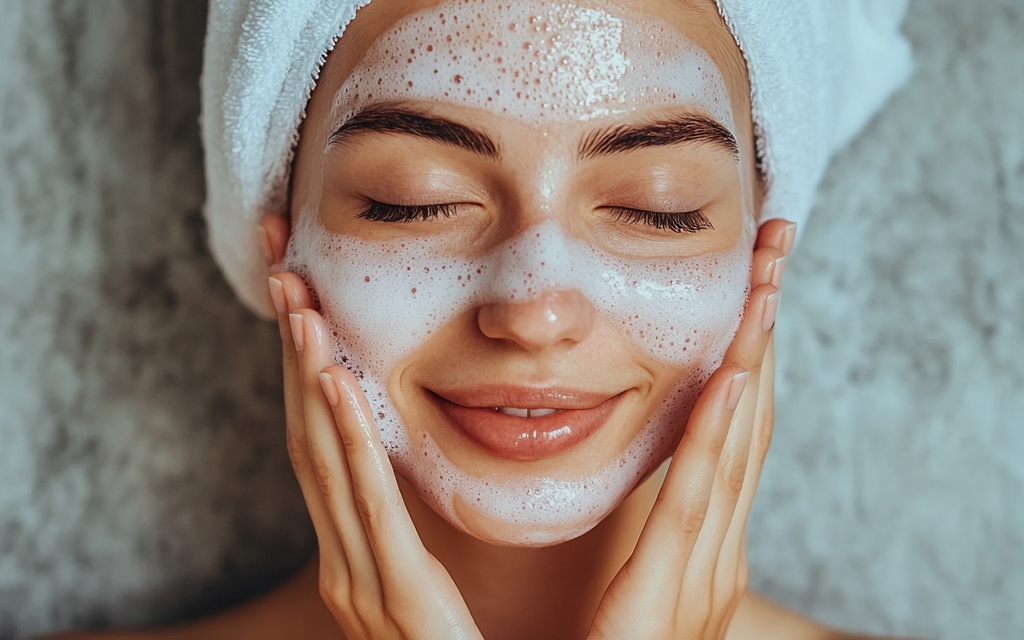Double Cleansing- What dermatologists say?
You may wonder whether there is any double cleansing for oily acne prone skin.
Yes, there is.
You’ve probably come across the idea of double cleansing by now. Numerous skincare gurus and influencers are huge advocates of this two-step cleaning approach—asserting that it’s the sole method to effectively eliminate all the grime, sunscreen, and makeup that can build up on your skin throughout the day.
But—honestly—is it essential for obtaining clear, genuinely clean skin, or is the rinse-and-repeat technique just a bit too much? To address these queries, we sought the opinions of three leading dermatologists.
As the name suggests, double cleansing involves cleaning your face two times.
The usual process begins with an oil-based cleanser, used to dissolve makeup, sunscreen, and dirt while removing excess oil from your skin. After rinsing, you follow up with a water-based cleanser for a more thorough cleaning. Alternatively, you can use micellar water as a first step, a lighter option that does not require rinsing afterwards.
Is this necessary?
Well, it depends. According to board-certified dermatologists, the two-step cleanse could be beneficial for some. “For those who wear heavy makeup, this method can ensure that all makeup is completely removed,” she explains.
The process can also be advantageous for individuals with oily skin, or those who regularly apply makeup or sunscreen as it guarantees the removal of all product layers and impurities, which is essential for preventing pore clogging and improve a dull complexion.
However, New York-residing certified dermatologist Robert Finney MD, FAAD, cautions that the procedure may have some unexpected adverse effects on certain skin types. “Someone with sensitive skin who isn’t wearing makeup can suffer more harm,” he states. “There is absolutely no necessity to double cleanse in such cases, and doing so can interfere with the skin’s protective barrier, resulting in dryness and irritation.” Keep this in mind when deciding if the double cleanse is suitable for you.

double-cleansing
Double Cleansing Method
- Use a dime-sized portion of an oil-based cleanser or micellar water, gently working it into the dry skin. This will aid in dissolving residue and oil-based debris on the skin.
- Rinse off using lukewarm water, employing either a washcloth or your hands.
- Next, apply a minimal amount of a water-based cleanser, employing gentle, circular movements to eliminate any remaining residue and impurities.
- Make sure to rinse your face thoroughly until it feels cleanser-free.
Use a clean towel to pat the skin dry gently or keep the skin moist and proceed with applying moisturiser.
Different skin types have different needs, so the type of cleanser you need may vary in terms of what benefits the cleanser offers and what your skin needs. Read ahead to get an idea of what you should be double-cleansing with bas
Top Cleanser Options for Each Skin Type
The needs of various skin types differ, meaning the cleanser you require may change based on the advantages the cleanser provides and the requirements of your skin. Continue reading to grasp what you should be using for double-cleansing depending on your skin type.
For oily skin:
It’s suggested to use gel or foam cleansers as they excel at eliminating surplus oil that can block pores, leading to breakouts.
For dry skin:
You should opt for a face wash with moisture-enhancing ingredients like hyaluronic acid, glycerin, and ceramides. Choose formulas with a creamy or lotion-like consistency and less likely to dehydrate the skin.
For normal/combination skin:
Gel, foaming, and oil-based cleansers can all be effective for combination skin. If you opt for a gel or foam cleanser, ensure it contains hydrating ingredients to prevent skin dryness. If an oil-based cleanser causes breakouts, discontinue its use.
For acne-prone skin:
A cleanser that can reduce excess oil, unclog pores, and manage breakouts is crucial. Look for acne-treating ingredients and anti-inflammatory properties like bezoyl-peroxide and azelaic-acid.



